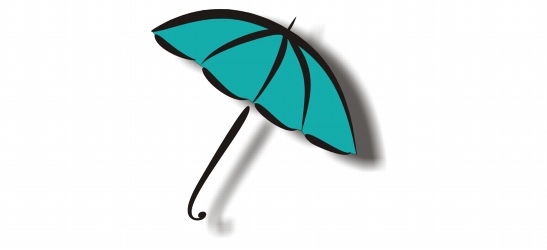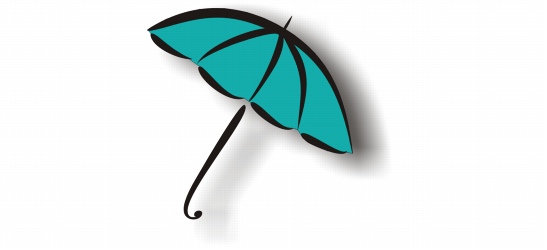Creating drop shadows
Drop shadows simulate light falling on an object from one of five particular perspectives: flat, right, left, bottom, and top. You can add drop shadows to most objects or groups of objects, including artistic text, paragraph text, and bitmaps.
Drop shadows created in CorelDRAW are ideal for printed outputs, but are not appropriate for output to devices, such as vinyl cutters and plotters. Cuttable shadows are needed for such projects. To add a cuttable shadow to an object, you need to duplicate the object, fill the duplicate with a dark color, and then place it behind the original object. For information about duplicating objects, see “To duplicate an object.”
When you add a drop shadow, you can change its perspective, and you can adjust attributes such as color, opacity, fade level, angle, and feathering.

A drop shadow applied to an object

The feathered effect softens the edges of a drop shadow.
After you create a drop shadow, you can copy it or clone it to a selected object. When you copy a drop shadow, the original and copy have no connection and can be edited independently. With cloning, the master object’s drop shadow attributes are automatically applied to its clone.
By separating a drop shadow from its object, you gain more control over the drop shadow itself. For example, you can edit the drop shadow as you would edit a transparency. For information about editing a transparency, see “Applying transparencies.”
As with transparencies, you can apply a merge mode to a drop shadow to control how the color of the drop shadow blends with the color of the object underneath. For more information about merge modes, see “Applying merge modes.”
You can also adjust the rendering resolution of a drop shadow. For example, you can increase the rendering resolution to improve a drop shadow’s appearance. However, increasing the resolution of a drop shadow may increase the file size of a drawing.
You can remove a drop shadow.
To add a drop shadow |
![]()
|
•
|
|
Drop shadows cannot be added to linked groups, such as blended objects, contoured objects, beveled objects, extruded objects, objects created with the Artistic media tool
|
To add a cuttable shadow |
To copy or clone a drop shadow |
![]()
|
•
|
|
You can also use the Eyedropper tool
|
To separate a drop shadow from an object |
To apply a merge mode to a drop shadow |
|
2.
|
|
Select an object with a drop shadow, and choose a merge mode from the Transparency operation list box on the property bar.
|
![]()
To adjust the resolution of a drop shadow |
To remove a drop shadow |
![]()
|
•
|
|
You can also remove a drop shadow from an object by clicking the Clear drop shadow button
|